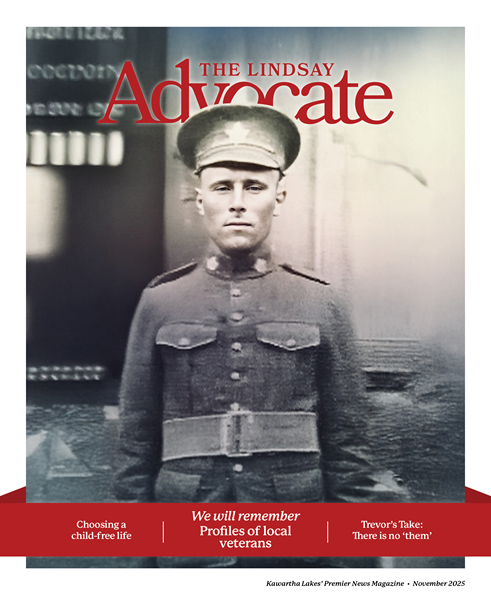Fair Vote Canada takes its message of voting reform across local riding
This system benefits particularly smaller parties that have problems mustering critical mass for riding success

Are you one of many voters who are frustrated with Canada’s first past the post electoral system that awards majority governments to parties that barely win 40 per cent of the popular vote? Are you looking for a different option where every vote counts, regardless of where it is cast? Fair Vote Canada, with a chapter based in Haliburton- Kawartha Lakes, believes it has the solution and members are currently engaged in a public information campaign going door-to-door in many parts of the riding to share information about moving to a proportional representation system of voting.
Brianne Harrison is one of 15 or so Haliburton-Kawartha Lakes residents you might meet at your front door over the next few weeks as Fair Vote Canada takes their campaign for electoral reform directly to Canadian voters.
“I started volunteering when I still lived in Toronto in 2015,” Harrison said. “I was sick of seeing governments elected with majorities with only 40 per cent of the vote. (Former Prime Minister Justin) Trudeau was making noise about this issue. It was such a disappointment for many when Trudeau backed off on his stated desire to implement electoral reform. I fully believe the issue was kept purposefully complicated so Canadians would have difficulty engaging with it.”
In its simplest terms, proportional representation often features a ballot where you are voting for a party rather than an individual. On election day, all the votes are counted by party. The percentage of the total vote cast for each party directly translates into the number of seats that party will have in the next Parliament. Quite literally, if a party wins only 40 per cent of the popular vote, they will only be awarded 40 per cent of the seats in parliament. Members of parliament are often assigned from ranked lists of candidates submitted by the party before the campaign begins. Once a certain vote threshold is reached, a candidate from the party list is awarded a seat in parliament.
This system benefits particularly smaller parties that have problems mustering critical mass for riding success in the first past the post system, but have appeal right across a nation.
This system, with room for locally developed nuances, is practiced by over 130 nations around the world including Finland, Sweden, Norway and Germany. Proportional representation systems have produced relatively stable and prosperous coalition minority governments where parties are forced to work together with smaller parties to govern because one party winning more than 50 per cent of the votes and seats is a rare occurrence.
When asked why she supports a move to proportional representation, Harrison is very specific.
“First, in a proportional representation system, there is less policy lurch,” Harrison began. “Because parties must work together to govern there is less undoing by one majority government what the previous opposition majority government had done before. Second, because there are way more minority governments, parties must learn to cooperate to govern and hopefully with that interaction parties will learn to behave like adults. Last, I believe a move to proportional representation will increase election turnout. Truly every vote will count and even if you live in a riding where the other parties dominate you know your vote will matter.”
Harrison told Kawartha Lakes Weekly in a telephone interview that their public information campaign has already begun in some parts of the riding. While they know they do not have enough volunteers to cover the entirety of Haliburton – Kawartha Lakes, Fair Vote Canada hopes they will leave their door hangers at as many homes as possible.
“We are getting a lot of questions as this campaign rolls out,” Harrison said. “A lot of voters do not know there are other options. We work very hard to make sure that we are not seen as representing any specific political party.”
For residents interested in learning more about Fair Vote Canada, Harrison encourages them to start at the group’s website and click on the “Get Involved” tab.
“There are lots of different volunteer options,” Harrison said. “Local leaders will reach out to volunteers in each riding when there is a campaign to become involved in. You also have the option of donating to Fair Vote Canada and that can be done through the website too.”





I like this idea and this way of voting!